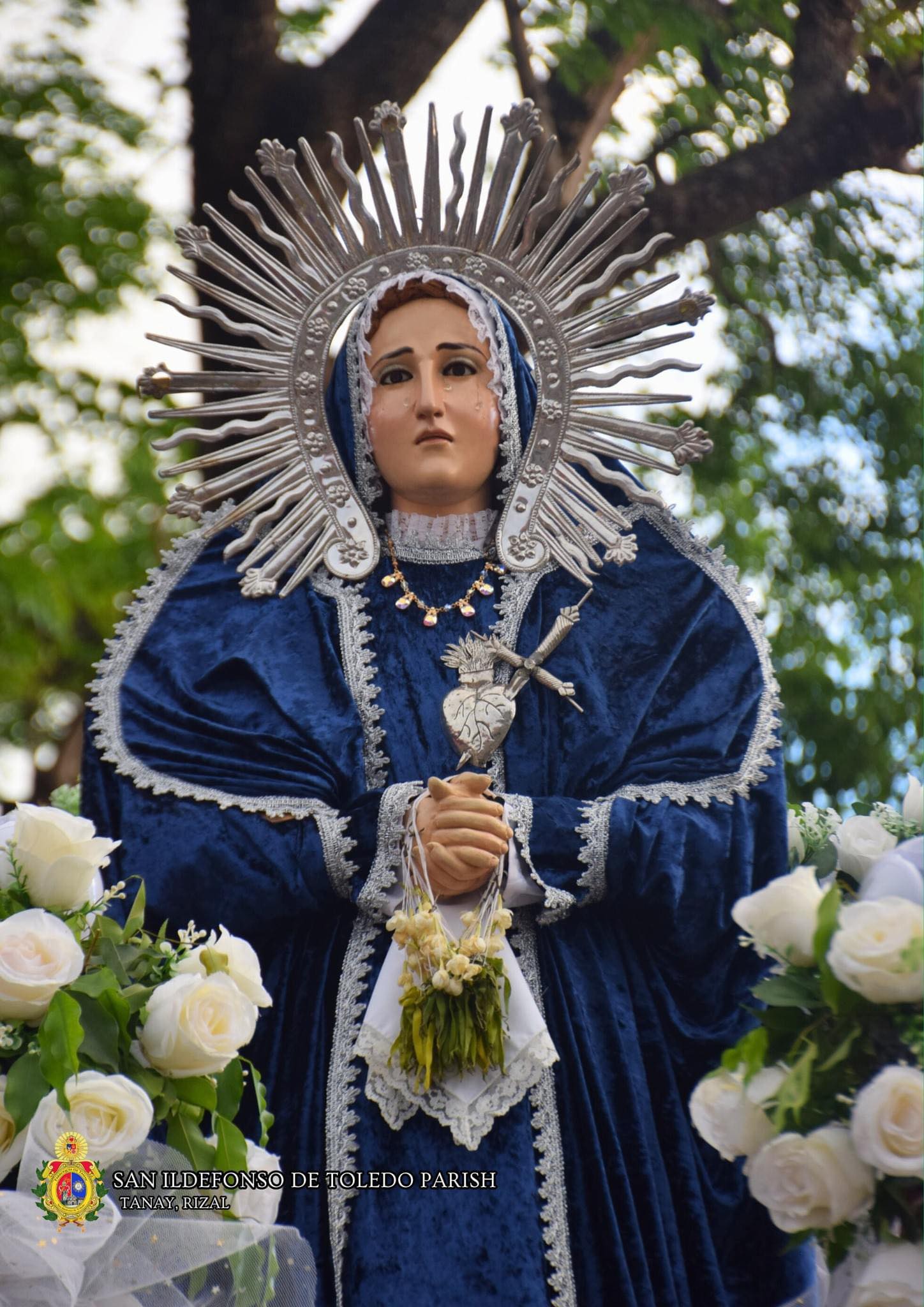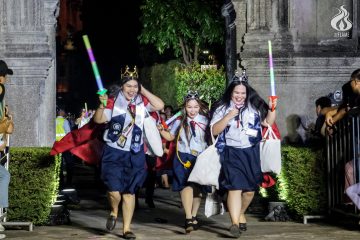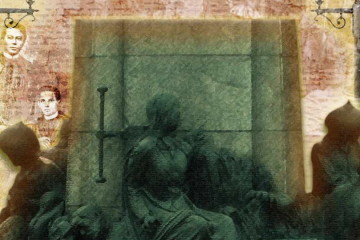A LIFELONG commitment to preserving sacred art, a deep loyalty to a duty that spanned generations and a burning desire to propagate the Catholic faith are just some of the qualities of a camarero.
Not only do they uphold the Catholic tradition of caring for the images of Jesus, Mary and the saints. They also educate the people about the models of the faith, well aware that statues serve as a visual catechism that effectively convey the messages of the Gospel.
In the Philippines, the practice of pagsasanto can be traced to the Spanish colonial era, where it was exclusively done by wealthy women called camareras.
As time passed, gender roles evolved and men are now among the caretakers of these lifelike images.

Familial devotion
Catholic traditions like the pagsasanto are deeply imbued in Filipino families.
Gabriel De Vela, a student from the UST Faculty of Arts and Letters, grew up into a family of camareros. This obligation has been passed down to his family from four generations ago.
“[We have been taking care of images] ever since we [inherited] an image in Tanay, which is Dolorosa. Before I was born, it was already there,” de Vela told The Flame.
He was referring to the Mater Dolorosa, an image depicting a sorrowful Virgin Mary and one of the most popular representations of the mother of Christ. It is a depiction of Mary crying over the suffering and death of Jesus whose face is surrounded with a rostrillo or facial aureole, whose heart is pierced with a dagger and is clad in black or purple mourning clothes.
This great responsibility is accompanied by expenses for the image’s clothes, flower decorations and carriage. Being a camarero does not come cheap.
Private saint owners like De Vela’s family spend about P10,000 every year to prepare for their image’s participation in key religious events.
De Vela said he saves his school allowance to help with the expenses of maintaining the statue.
“It is actually very miraculous in a way because [there was a time when] I didn’t know where to get money. I had money but I know it was not enough. Then came my birthday, people gave me money. In a way, it was like the [saint] made a way for me to have money so that [the saint] can [join the procession] and the people can see her,” De Vela said.
The role of “saint-keepers” like de Vela is more than just dressing and preparing the image for a procession. It is regarded as an offering to the Lord.
“I find happiness in taking care of [image of saints.] It gives me a sense of obligation because we treat [them] almost as persons in a way that is, for some sects, dangerous,” De Vela said.
The Catholic Church teaches that the use of images depicting Christ, Mary and the saints is not idolatry because devotees do not worship them. According to the Church, Catholics only worship God and that the statues only serve as reminders of the life and virtues of the figures they represent.

Preservation of Uncion Sagrada
No matter how long a procession’s journey is, all roads will eventually lead to the church. The famous adage serves true especially for young camareros like De Vela.
As the carrozas move across the streets, its end destination will always be where it started: the church.
Much like these carrozas carrying holy images, de Vela’s faith as a young camarero is his way of giving back to the Church, a means of asserting his Catholic identity.
He pointed out that camareros play a key role in the Catholic community as “propagators of faith” alongside priests and nuns.
“We aid in the propagation of the Catholic faith, so that the people can know better the way of life (of the saints) that we should imitate. We are responsible for reflecting the saints’ holiness and image so that many would be inspired to be like them.” De Vela said.
To be in the unique position of being a prime propagator of faith, he emphasized the very principle that every camarero should uphold: the preservation of uncion sagrada or sacred anointment.
“When you look at the image of the saint… you will feel something, like you want to burst into tears, like you want to kneel down to cry and pray. There is something (or) a different force, a mixture of emotions that science can’t explain,” de Vela said.
Crucial to conserving the uncion sagrada is maintaining the representation and iconography of the saints. An important aspect in the representation is the attributes or the objects associated with the saints, which provide a glimpse of his or her life or role in the Gospels. For example, St. Peter’s attributes are a key because he was given the keys of heaven and a rooster because a rooster crowed when he denied Jesus. Attributes also distinguish one saint from the other, especially if they possess common physical features.
While modern ways of dressing up the santo emerge in contemporary landscape, De Vela said it is important to take into account biblical representations when dressing up an image. Dressing up saints in disrespectful manner, is an act of “sacrilege,” he added.
“It’s okay to modernize the way the saints are dressed up as long as it is rightful to their iconography… As long as the image is well-respected and does not appear as offensive,” the camarero said.
While some processions are characterized by pomp and pageantry, camareros strive to capture the simplicity of the saints to showcase their humanity. After all, the followers of Jesus represented by the images had managed to overcome their human frailties to become models of obedience to God’s will.
“There are a lot of things to do when you care for a saint. But among it all, the commonality and what camareros aim is our obligation to spread the simplicity of the image,” De Vela added.
According to De Vela, the pagsasanto also has a cultural aspect, noting that the practice is shaped by the peculiarities of their country.
“When you become a camarero, you are not just propagating faith and the Catholic Church’s belief. You are also upholding and spreading the country’s culture,” he said. F



